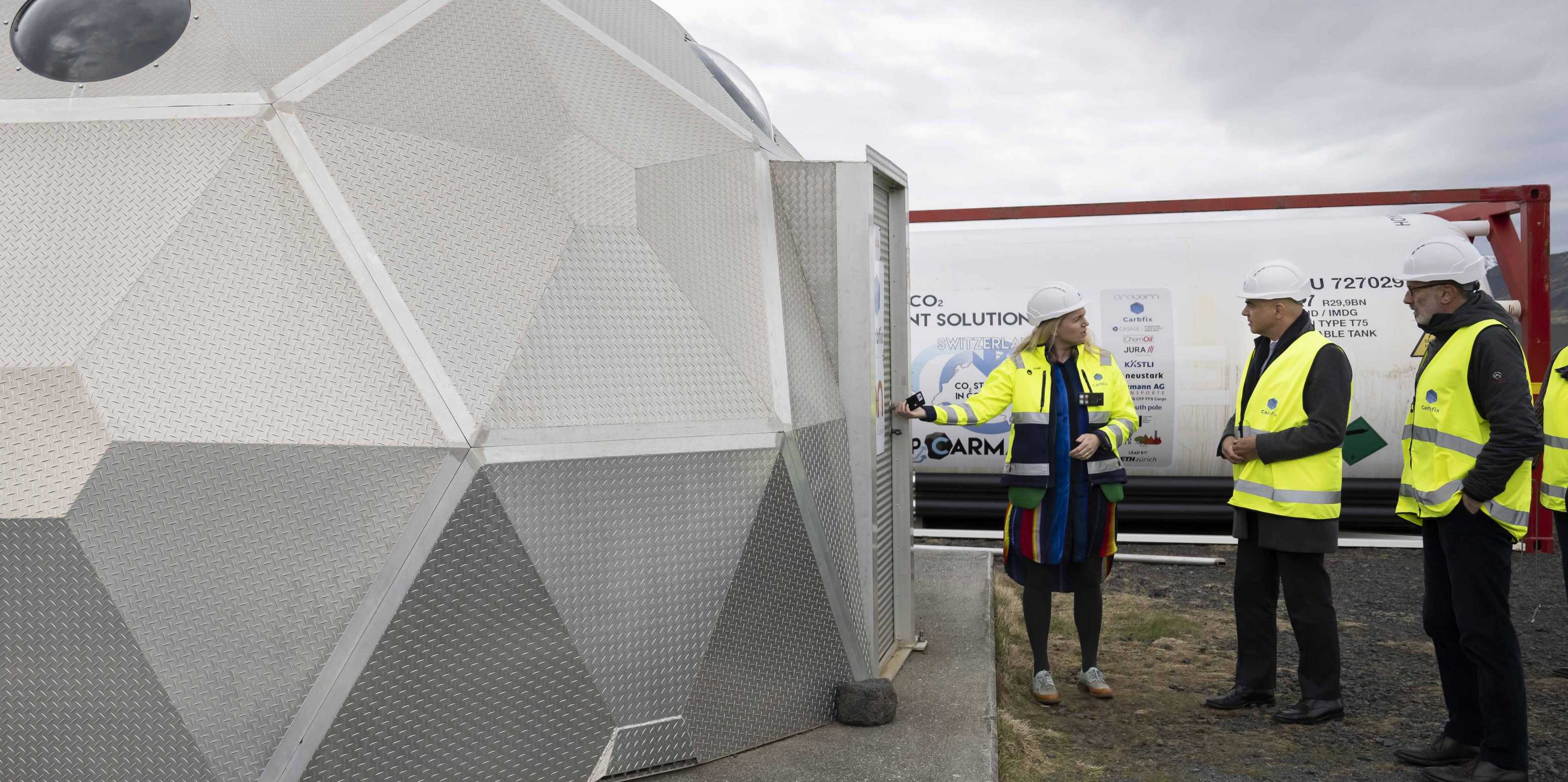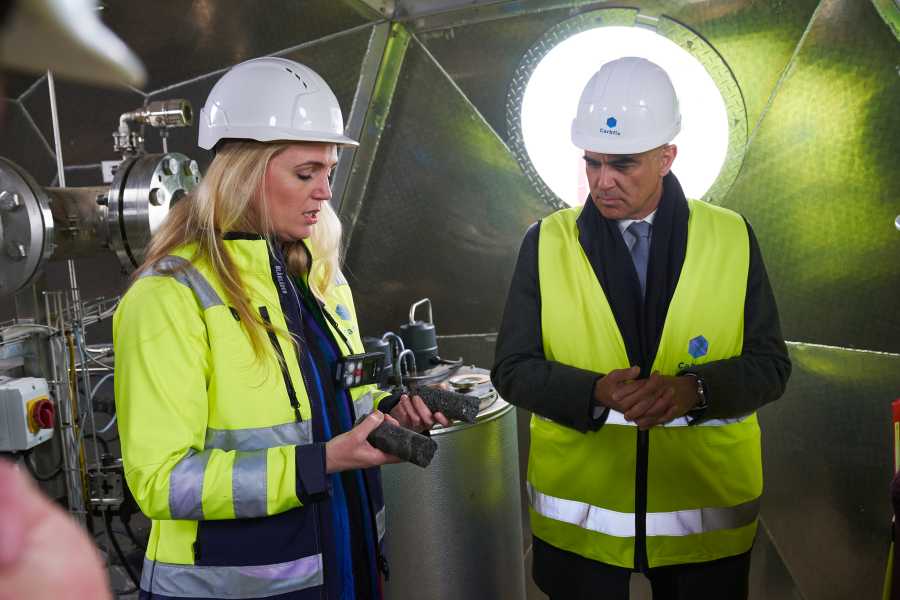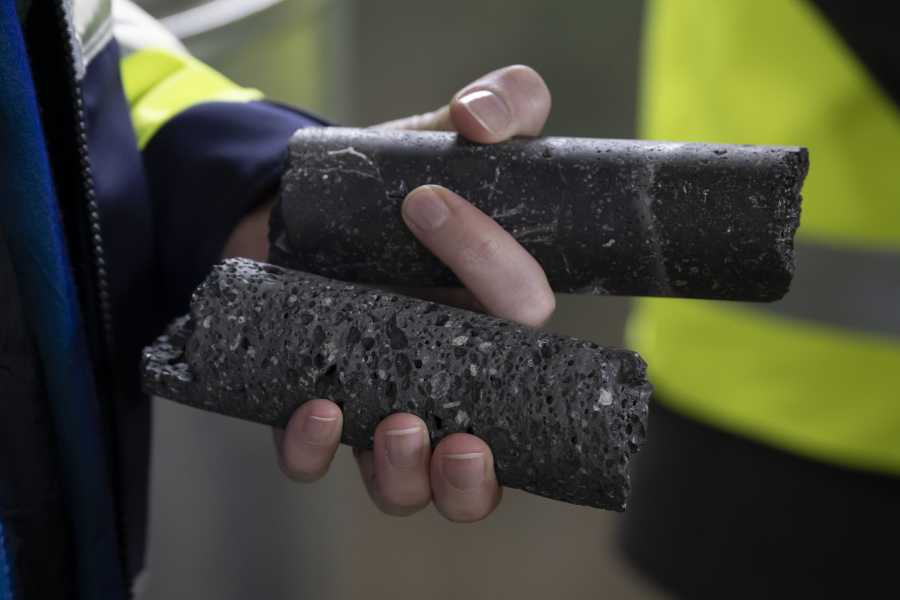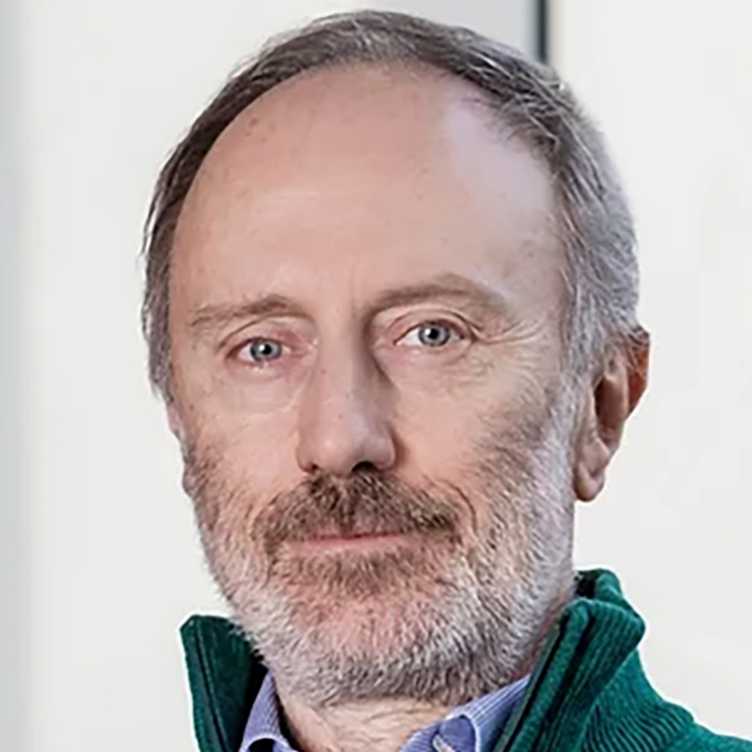Yesterday, Swiss President Alain Berset toured the Carbfix plant in Iceland and visited the facilities where the pilot project "DemoUpCARMA" is implemented. The project aims at injecting and storing CO2 in the Icelandic underground. Marco Mazzotti, project coordinator and ETH Zurich professor, explains why Swiss CO2 is being shipped all the way to Iceland.

Alain Berset has just visited the DemoUpCARMA project in Iceland. What has he seen?
Marco Mazzotti: The president visited the CO2 injection site, where the containers filled with Swiss CO2 arrive and are connected to an injection system by a pipeline. During his visit, the CO2 was continuously injected from these tanks into the basalt rock, where it is expected to mineralise and form limestone in a few years.
What is DemoUpCARMA generally about?
The "DemoUpCARMA" project is a large consortium led by ETH Zurich. Within the scope of the project, researchers demonstrate two pathways to capture, utilise, transport and store CO2. In the first pathway, CO2 is mineralised in demolition concrete aggregates for the production of new building material, e.g., recycling concrete, - known as "Carbon Capture, Utilization and Sequestration (CCUS)". In the second pathway, CO2 is transported across borders and stored in basalt formations underground in Iceland - known as "Carbon dioxide Capture, Transport, and Storage (CCTS)". This international project uses, among others, the technology and injection infrastructure of the Icelandic company Carbfix. Within this pilot, we transport CO2 for permanent geological storage from Switzerland to Iceland for the first time. The transported CO2 is from a biogenic source located in Bern, i.e., it was produced by fermenting biomass and separated from biomethane in a biogas upgrading plant. After capture, the CO2 is then liquefied and transported in dedicated containers, i.e., isotainers.
How should one imagine the transport?
First, a lorry brings the isotainers from Bern, where the CO2 source is located, to Basel. Next, the containers are transported by rail to Rotterdam. From there, the containers are shipped to Reykjavik, and finally transported by lorry to the Icelandic storage site. One container contains 20 tonnes of CO2.
How many isotainers have been transported to Iceland so far?
The plan is to accomplish 50 trips to Iceland, using five isotainers in total; four shipments have been delivered so far. Two isotainers have been emptied and the CO2, mixed with fresh water, has been injected underground. In the future, we plan to test the use of seawater to dissolve CO2 prior to injection - a technological novelty and a potential breakthrough for the large-scale application of this solution.
Why is the Federal Council interested in this project?
Developing solutions for CO2 capture and storage (CCS) and for Carbon Dioxide Removal (CDR) is part of Switzerland's climate strategy. If Switzerland wants to reach its net-zero target, it will have to annually capture around 12 million tonnes of CO2 in 2050, either from point sources or directly from the amosphere. DemoUpCARMA is the first step in developing these solutions. It is necessary to start as soon as possible to identify and address all related challenges at an early stage. The Federal Council is interested in the project and is supporting it financially via the Federal Offices of Energy and Environment.
What are the other goals of DemoUpCARMA?
In addition to the activities described above, DemoUpCARMA aims to investigate the feasibility of scaling up the two solutions. This will be tackled from a holistic perspective, meaning we first analyse the technical, economic, environmental, and risk-related performance of CCTS and CCUS supply chains in Switzerland. Second, we address aspects related to regulations, certification, financing, governance, and public perception. Finally, together with industry partners, we are investigating the integration of CO2 capture at two specific plants, namely the municipal solid waste treatment plant in the city of Zurich (ZH) and the Swiss cement plant of Jura in Wildegg (AG).
How far has the project progressed?
The demonstration of the CCUS route in demolition concrete in Switzerland is almost complete. The upscaling studies will be finished before the end of this year. The CCTS pathway, with injection in Iceland, will take six to ten months longer due to delays in completing the new injection site, where we will test the use of seawater.
-

Edda Aradottir, CEO Carbfix is showing Swiss President Alain Berset two rock samples, on without CO2 injection (down) and with CO2 injection (up), during a visit of a pilot project lead by ETH Zurich called DemoUpCARMA. (Photograph: Hordur Sveinsson / Carbfix) -

Two rock samples, on without CO2 injection (down) and with CO2 injection (up). (Photograph: Keystone / Anthony Anex)
Why is the project being carried out in Iceland?
Iceland was selected for two reasons: It was the only country where a CO2 storage site was available and ready to receive "foreign" CO2. Other CO2 storage operations are being carried out but mostly with a national or company scope. Furthermore, Carbfix utilises a unique technology, whereby CO2 dissolved in water is quickly mineralised after injection through a reaction with the basalt formation. As part of this Swiss-Icelandic cooperation, Carbfix will further pioneer a novel injection process, which uses seawater instead of freshwater. Finally, an array of advanced monitoring techniques that will be operated by Swiss scientists, such as the Swiss Seismological Service at ETH Zurich, will be implemented. This adds substantial value for the scientific components of the project.
Could CO2 also be stored in this way in Switzerland or in other areas of continental Europe?
The Swiss partners of DemoUpCARMA are indeed exploring this possibility, although the Swiss geology does not seem to have favourable properties for CO2 storage via mineralization. However, it is too early to draw definite conclusions.
How much CO2 will it be possible to store in Iceland?
Iceland's CO2 storage capacity is huge: experts talk about several gigatonnes of CO2. However, researchers still need a better understanding of how much of this capacity can be ultimately exploited. DemoUpCARMA and the injection of CO2 using seawater is an important achievement in the direction of being able to exploit this capacity.
Isn't that a drop in the ocean?
DemoUpCARMA is indeed a drop in the ocean, but you must start somewhere when a new technology targeting large-scale deployment. Of course, many other measures will also need to be implemented to address the climate crisis; CCS alone cannot solve the problem.
About the person

Marco Mazzotti has been Professor of Process Engineering at ETH Zurich since 1997 and is project coordinator of the DemoUpCARMA project.






